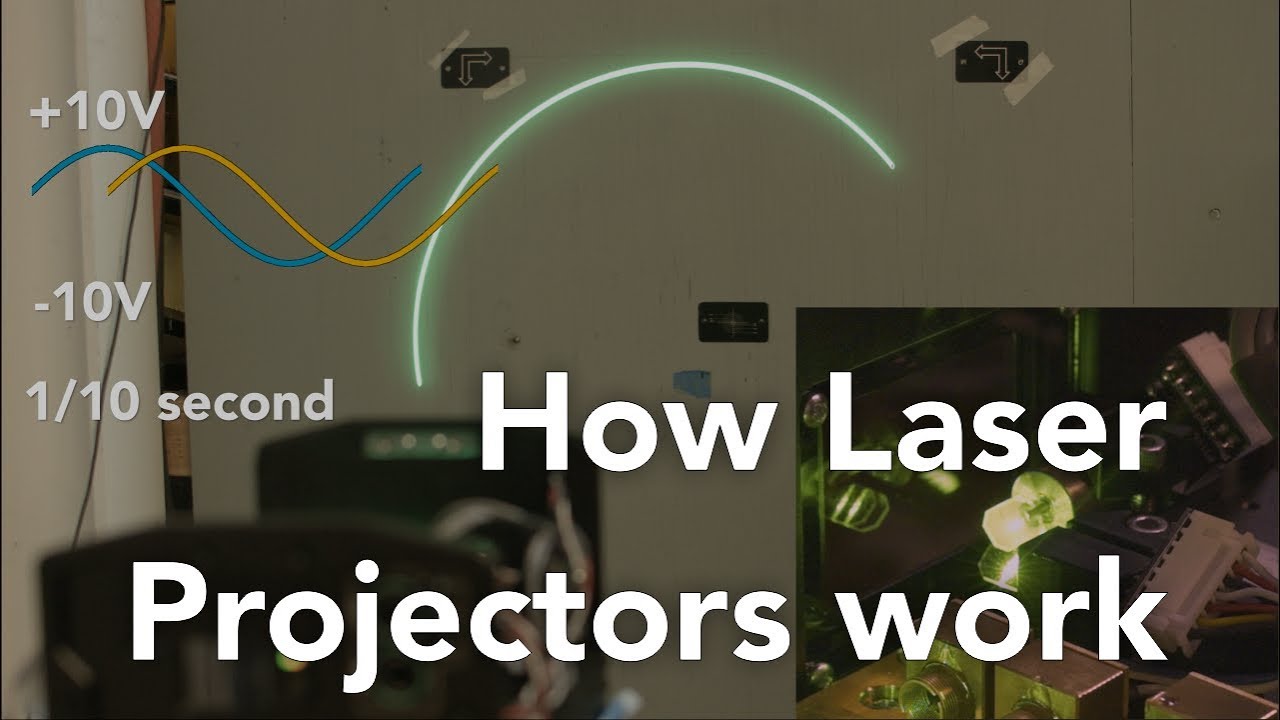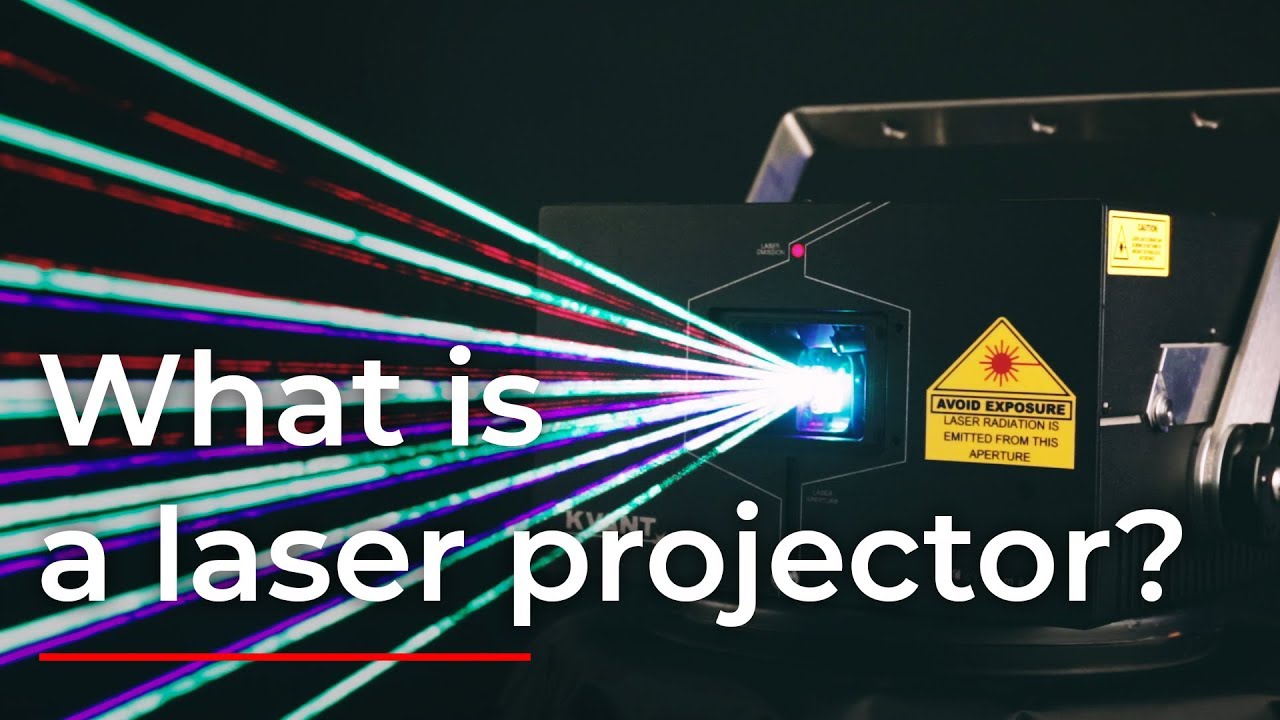Unveiling The World Of Laser Projectors: A Comprehensive Guide
Introduction
Welcome to the expansive world of laser projectors: a rapidly evolving technology that's redefining the landscape of visual presentation. Whether for personal entertainment or professional presentations, laser projectors have surpassed their peers in their ability to display stunning, high-resolution images. This comprehensive guide delves into the specifics of what a laser projector is, exactly how it operates, and why you should choose it over traditional projectors. We will also explore their practical applications and crucial factors to consider when investing in one.
What is a Laser Projector?
A laser projector is a sophisticated piece of equipment known for enriching the world of visual presentation with its notable capabilities. It's a device that taps into high-tech mechanisms to beam out vibrant displays with great precision and clarity. Let's delve deeper into its anatomy:
- Phenomenon: Laser projectors are described as non-contact instruments that generate display graphics by utilizing laser beams for illumination. This method is a significant shift away from traditional projectors that operate independently on light and color processing.
- Process: In laser projectors, both lighting and coloring processes work in harmony to produce powerful, and intensely bright visual displays. This technological combo contributes to more detailed projection which remains sharp even in ambient light situations.
- Unique Features: The broader color coverage is another specialty of laser projectors, capturing a wider color spectrum compared to the ordinary projectors and screens.
- Revolutionary Impact: Laser projectors have made substantial strides in visual display technology. Their key contributions include achieving supreme color accuracy, ensuring prolonged operational life, and promoting power efficiency.
In a nutshell, a laser projector symbolizes a remarkable transition from traditional projection techniques to a more refined, vibrant, and energy-efficient model of visual display.
How Does a Laser Projector Work and What Makes It Unique?
A laser projector’s operation might seem complex on the surface, but the principle behind its functioning is impressive. Equipped with laser beams as a light source, these projectors deliver vibrant and hi-resolution images. But how does it achieve this? Let’s break it down:
- Illumination Source: Rather than using traditional lamps found in conventional projectors, laser projectors employ laser beams to create images. The laser light source brings the brightness and clarity of images to unprecedented levels.
- Image Formation: Laser projectors use a critical component known as the Digital Light Processing (DLP) chip. The laser beams shine onto this chip, which then maps and reproduces the projected image.
- Enhanced Color Spectrum: The application of laser light leads to a broader spectrum of colors. As a result, you get to experience a higher contrast ratio and superior image quality.
The utilization of laser technology undoubtedly makes laser projectors distinctly unique. Below we delve into the distinguishing features that set the laser projector apart from its counterparts:
- Bright and Accurate Imagery: Laser projectors are known for their ability to produce images that are not only bright but also possess less diffused light. This quality contributes to achieving colors that are vibrant and true-to-life.
- Extended Life Span: With lasers at work, projectors operate for significantly longer periods. Unlike their traditional counterparts, laser projectors don't suffer from abrupt burnouts.
- Minimal Maintenance: Being lamp-free means that laser projectors have practically zero-maintenance, making them highly reliable in the long run.
- Energy Efficient: Laser projectors are safer and more energy-efficient due to minimized heat output and intelligent light usage.

In summary, a laser projector works by utilizing lasers to generate images on a DLP chip. Their unique selling proposition is their superb image quality, extended lifespan, low maintenance, and energy efficiency. All these characteristics ensure an exceptional viewing experience, making laser projectors a solid choice for consumers and professionals alike.
Why Choose a Laser Projector over Traditional Projectors?
The following points highlight why laser projectors are becoming the preferred choice over their traditional counterparts:
1. Superior Image Quality: Laser projectors are known for their higher brightness and superior color accuracy, resulting in lifelike, vivid visuals.
2. Longer Lifespan: Durability is a critical advantage of laser projectors. They offer up to 20,000 hours of operation before any decrease in brightness, as compared to the 1,000 - 2,000 hours provided by standard lamps in traditional projectors.
3. Silence and Speed: Laser projectors operate almost silently, proving to be less intrusive. Additionally, they provide instant on/off capability, making your presentations more efficient.
4. Flexible Installation Options: Due to their design, laser projectors can be installed in a variety of positions, including ceiling mounts, placed on a table, or even oriented sideways.
5. Energy Efficiency & Environmentally Friendly: By using lasers as a light source, these projectors consume less power, making them more energy-efficient. Also, they do not use mercury-filled lamps, and hence, are more environmentally friendly.
6. Cost-Effectiveness: Although the initial cost may seem high, the long-term cost of ownership is significantly lower, mainly due to much longer operating life and reduced maintenance and energy costs.
In summary, given these compelling advantages, it's easy to understand why laser projectors are becoming the preferred choice for both professional and personal use, leading the way in projection technology.
Practical Applications of Laser Projectors
The adoption of laser projectors is rising at an impressive rate, thanks to their outstanding performance and flexibility. These essential applications cover various sectors:
- Home Theaters: For movie enthusiasts, laser projectors display exceptional image quality and offer long-term savings, making them the top choice for home theaters.
- Educational Institutions: Schools and universities find laser projectors valuable for lectures and presentations, primarily due to their vibrant color representation.
- Businesses: In the corporate world, laser projectors enhance the clarity and delivery of presentations.
- Planetariums: Offering striking celestial visuals, planetariums increasingly rely on laser projectors to bring the night sky to life.
- Outdoor Venues & Events: Laser projectors' high brightness levels make them a go-to option for outdoor venues needing to display images clearly, even in daylight.
These varied uses are a testament to the unrivaled quality and adaptability provided by laser projectors.
What to Consider when Investing in a Laser Projector?
When stepping into the market to invest in a laser projector, a plethora of factors comes into play. Ensuring you consider these points can help you make an informed decision that caters best to your needs.
1. Usage Purpose: Different scenarios have varying projection requirements. You need to identify whether the projector is for home theatre, business, or educational use. Each setting will likely demand unique specifications.
2. Brightness Levels: Measured in lumens, brightness levels directly influence image clarity. While higher lumens mean brighter images, they can add to the projector cost.
3. Contrast Ratio: This feature determines the level of detail in dark scenes. Higher contrast ratios translate to deeper blacks and more vibrant colors.
4. Resolution: Resolution affects picture sharpness. Higher resolution projectors can deliver more detailed and crisp images.

5. Color Accuracy: Projectors with great color accuracy can reproduce colors to appear as realistic as possible, enhancing the viewing experience.
6. Placement Flexibility: Your available space and setup will affect projector placement. Some projectors offer more flexibility in terms of throw distance and lens shift capabilities.
7. Noise Levels: Some projectors can be quite noisy. If silence is golden for you, consider the noise levels.
8. Total Cost of Ownership: Beyond the purchase cost, bear in mind other long-term factors like energy consumption and maintenance requirements. Laser projectors, while initially more expensive, usually have lower total ownership costs due to their long lifespan and energy efficiency.
Remember, the right laser projector for you is one that balances perfectly between your requirements and budget.
Conclusion
Laser projectors, with their superior capabilities in brightness, color accuracy, lifespan, and energy efficiency, certainly represent the future of projection technology. Whether for personal or professional use, they offer unparalleled quality and versatility. As the technology continues to evolve, it's an exciting time to delve into the world of laser projectors.
Related FAQs about what is a laser projector
Why are laser projectors considered better for the environment?
Laser projectors are environmentally friendly because they consume less energy than traditional projectors. They also do not use lamps that contain mercury, a hazardous substance harmful to both the environment and human health.
What are some popular uses of laser projectors in our everyday life?
Laser projectors are popular in home entertainment systems for viewing films and gaming. They are also commonly used for professional presentations in corporate settings and educational institutions. In addition, they are suitable for large-scale outdoor displays.
How cost-effective are laser projectors compared to other types of projectors?
Although the initial cost of laser projectors can be higher, their long lifespan and minimal maintenance requirements make them more cost-effective in the long run. Their energy-efficient operation also results in lower electricity costs.







